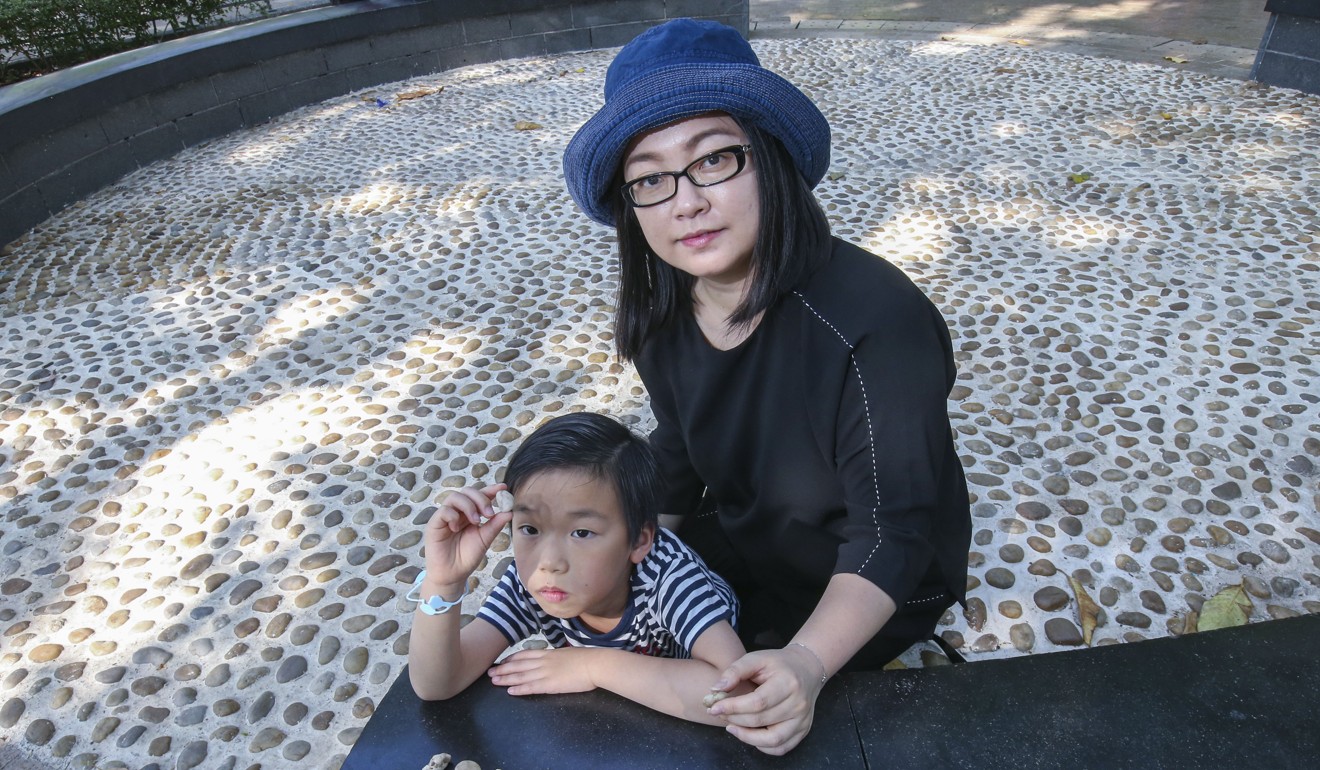
Are Hong Kong’s super-safe and boring playgrounds failing our children?
Critics say officials favour a risk management model that sacrifices fun, excitement and the keys to happy development
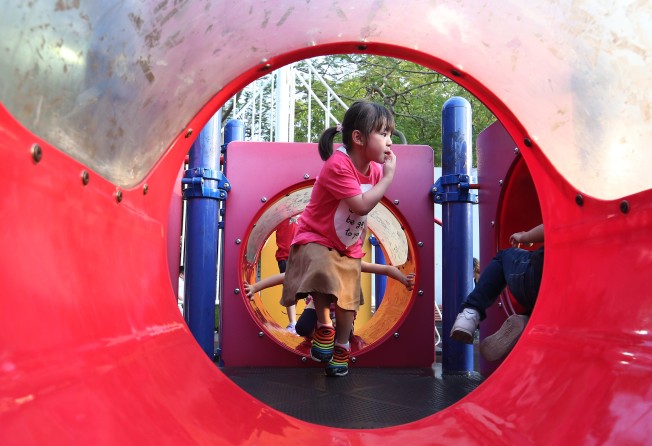
When Hong Kong officials decided to glue down pebbles that were originally removable in a play area at Victoria Park, little did they know their decision would upset tens of thousands of children.
Sirius Yip Shing-yuk, 6, was one of the unhappy youngsters. He felt strongly enough in February to write an open letter to the Leisure and Cultural Services Department head, Michelle Li Mei-sheung. The LCSD manages more than 600 playgrounds and parks.
“When I was a baby, my father and mother often brought me to the pebble field at Victoria Park,” the letter, written in Chinese, read. “But now the pebbles are gone and they are all stuck to the ground. I am very disappointed.”

The department said the precaution was “in response to public concerns about park users’ safety”.
For years, parents and children’s concern groups in Hong Kong have complained about similar issues Sirius raised – a boring playground marked by monotonous design, an insufficient amount of play equipment and a lack of inclusive facilities.
The problems persist, they contend, despite society widely recognising that a fun, safe yet challenging environment can enhance a child’s development in many ways, such as their interpersonal skills and adaptability.
Unicef finds Hong Kong parents value free play for their children (but don’t really know what it is)
Also in February, the Legislative Council published a report on public playgrounds listing their problems.
Those who work with children say the safety-first playgrounds in the city discourage children from learning through play.
“We really need to do a lot of research on where the most fun and most interesting playgrounds in Hong Kong are before we go out,” Sirius’s mother, Shirley Tang Shuet-yiu, says, adding that high-end shopping malls “very often” afford the best options.

“That makes me wonder why some public, free-of-charge playgrounds can’t do the same.”
Tang, who is also a deputy principal at a local kindergarten, says her son’s experience has shownofficials prefer to play safe by creating an environment that is boring but free from danger. But the mother believes fun should not be compromised in the process.
Edward Leung Wai-kuen, executive director of NGO Hong Kong Playground Association, goes further.
“The Hong Kong government might be the most conservative administration in the world,” he says.
“Public playgrounds in Hong Kong barely fulfil leisure needs and they also don’t serve as a tool for children to learn through play.”
An LCSD spokeswoman says the department is “committed” to providing diverse play equipment in children’s playgrounds and for different ages and abilities.
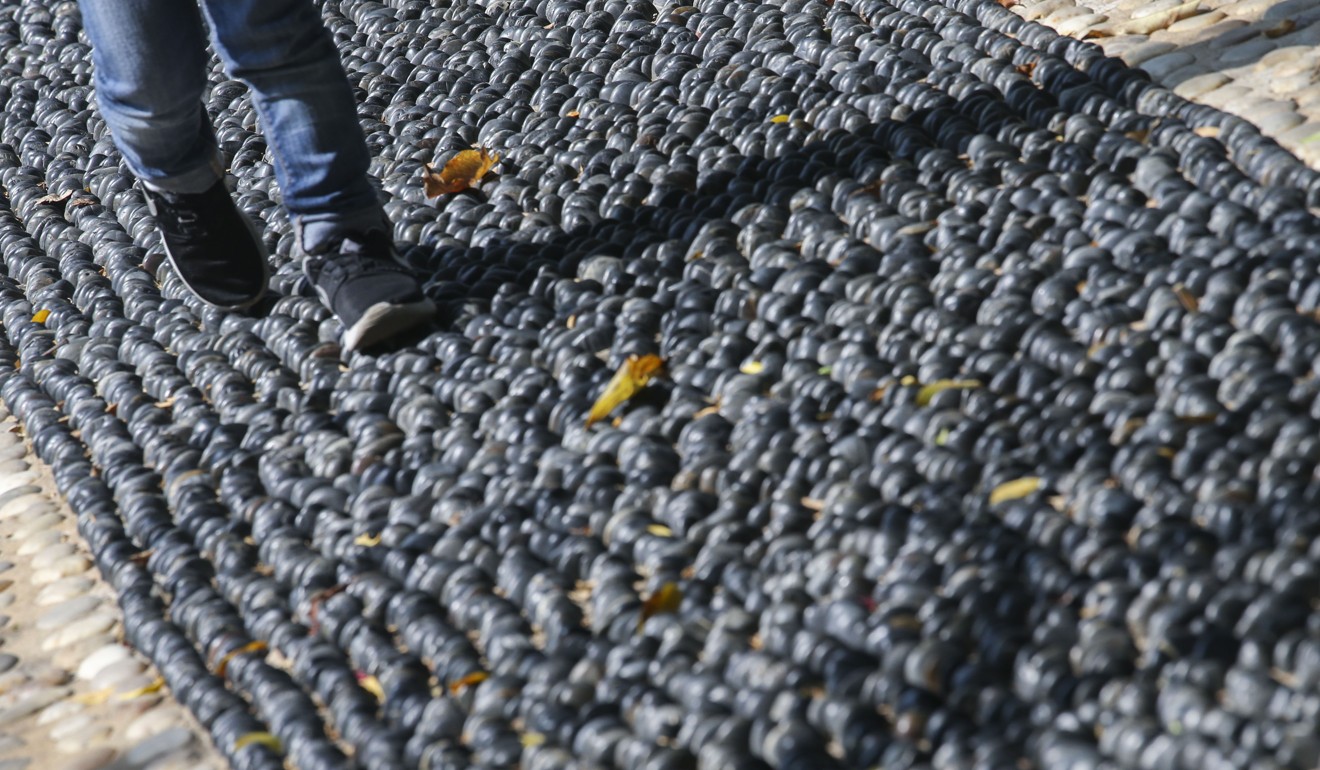
In Singapore’s public Tiong Bahru Park Adventure Playground, a train structure is one of the most popular and exciting areas for children to frolic. Another draw are two zip lines above the sandpit area known as the “flying fox”.
In London’s Diana, Princess of Wales’ Memorial Playground, a wooden pirate ship is the centrepiece, surrounded by tepees and other interactive sculptures. More than 1 million people visit the free playground every year, according to its website.
“The design has created an area where less able and able-bodied children can play together, and seeks to provide for the physical, creative, social and educational development of your children,” the website says. “Inspired by the stories of Peter Pan, the playground encourages children to explore and follow their imaginations, learning while they play.”

Policy makers in London are also planning to allocate at least 10 square metres of playground to each child – in sharp contrast to Hong Kong, which has an average of 0.27 square metres of playground per child, according to the Legco report.
Striking a balance between safety and adventure remains a challenge
While most public playgrounds in Hong Kong provide only the basics – such as old-school merry-go-rounds, swings and slides – some parents and children must fight for a higher slide.
In 2015, the LCSD decided to remove a four-metre-high, 14-year-old slide in Hong Kong Park in Central because of potential danger or injury.
Most slides in the city measure two metres or less.
The removal triggered huge opposition from parents’ groups and others. The department later installed a new tunnel slide that was the same height as the original.
Desmond Chu Pak-yan, spokesman of NGO Hong Kong Public Space Initiative, says most of the city’s playgrounds emphasise safety first, rather than encourage children to explore and take risks. Chu believes officials have overlooked how much an adventurous playground design can affect a child’s development.
He adds the city’s public playgrounds are failing to meet the needs of children above 10, although the LCSD website shows most of its playgrounds are designed for those aged two to 12.
“A safety-first playground is the result of conservative management,” Chu says. “Striking a balance between safety and adventure remains a challenge to both Singapore and Hong Kong. While Singapore is more concerned about children’s adventurous experiences, Hong Kong chooses a risk management model.”
Learning through play
Most local children long for more fun and enjoyable facilities at public playgrounds, according to a 2016 study by the Boys’ and Girls’ Clubs Association of Hong Kong that polled 1,200 children and 450 parents.
Three facilities topped the wish list: a slide, swing and rope course. More than 60 per cent of the surveyed children cited a desire for more excitement.

Leung, who has worked with the association since 1982, says a challenging playground is extremely important to children today as they need to be ready for a future that places a premium on creativity and an ability to adapt to fast-changing technology.
What is more, playground experiences cannot be replaced by digital devices, he claims, even if the gadgets keep rising in popularity. Through adventure, children learn how to cooperate with others, solve problems and stay tough amid adversity.
“They can’t learn from pain in the virtual world.”

Echoing Leung’s views, Amos Cheung Chuen-yih, president of the division of clinical psychology at the Hong Kong Psychological Society, says a more challenging playground can train children’s muscle coordination, visual and spatial coordination as well as social skills. Cheung describes all the benefits as essential to healthy early childhood development.
Leung says he understands that some parents are deeply concerned about whether their children will get hurt while playing. But he says youngsters should be encouraged to take risks when they play to prepare well for their future life.
“When our children have sports class in an air-conditioned room .. how can they strengthen their health?” he asks.
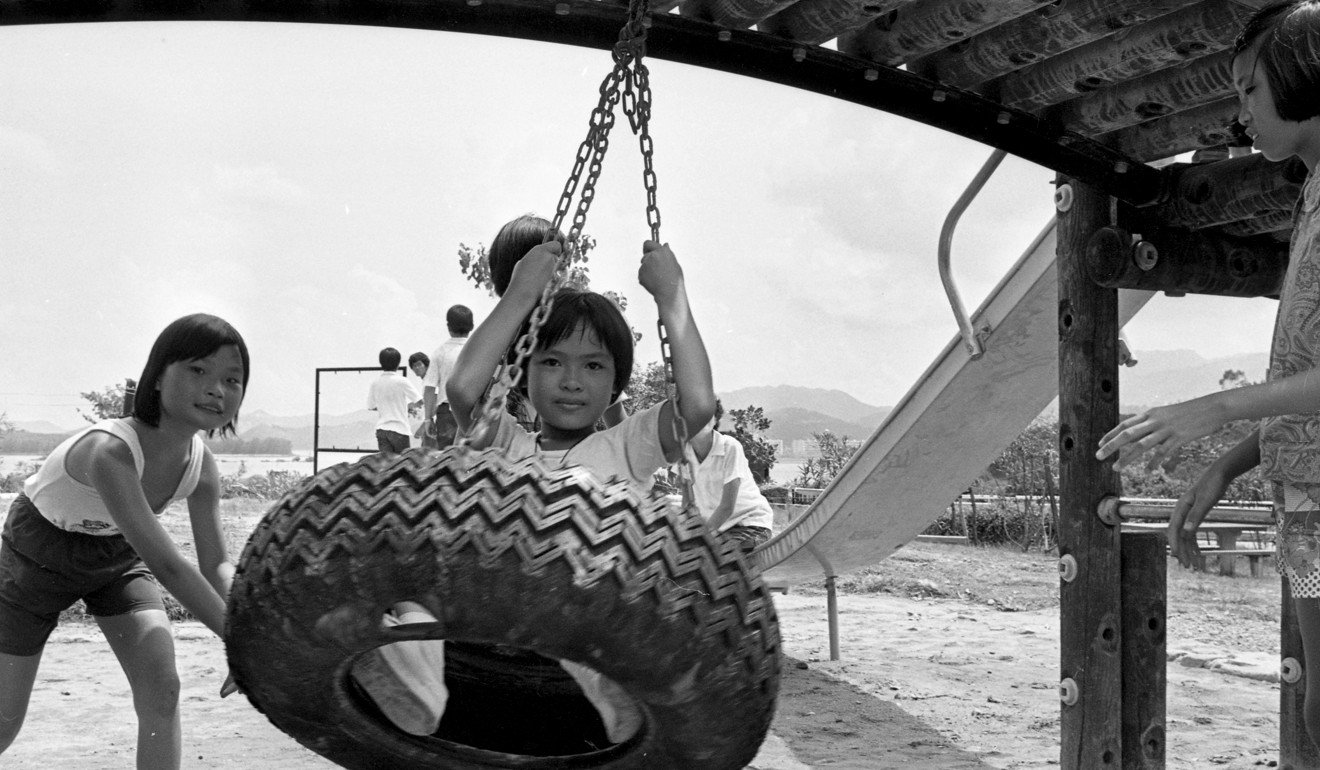
Late to the game?
In 2016, the government announced it would introduce a new concept of inclusive play and barrier-free facilities to the children’s playground at Tuen Mun Park, featuring elements of water and sand.
It has yet to open, but when it does, it will be the first of the kind and serve as a pilot project for the city.
Chris Yuen Hon-cheong, a consultant for non-profit Playright Children’s Play Association, which is involved in the project, admits Hong Kong is late to the game compared with other cities in the world.
However, Yuen believes the local community has needed time to recognise and understand the value of adventurous playgrounds.
But Tang, mother of the letter-writing Sirius, counters that if she did not know how important these playgrounds were to her son’s development, the two would not have travelled across the harbour from Kowloon to Hong Kong Island regularly so that the boy could play with the pebbles.
“Like many mothers in Hong Kong, I only hope the government can do just a little more for our children,” she says.
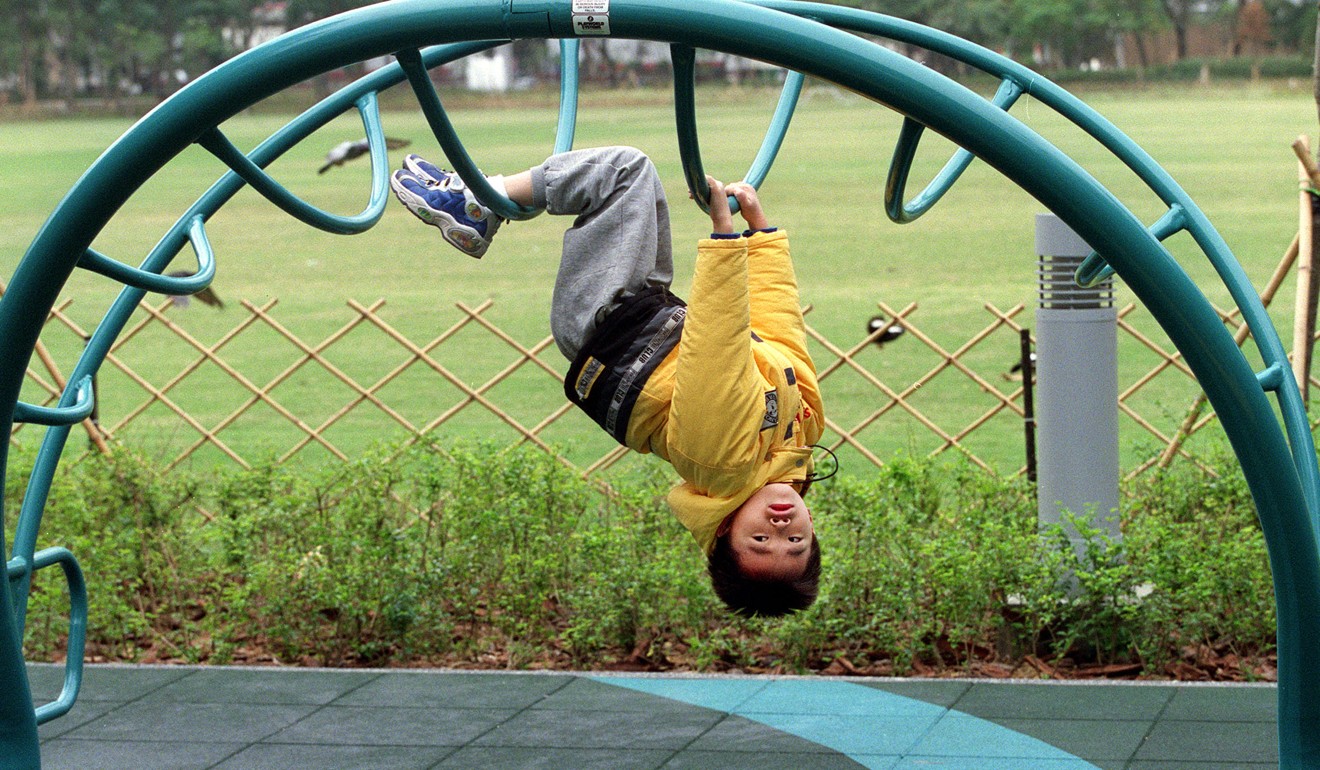
WORD FROM THE PLAYGROUND
Rachel Leung asks parents and children for their views on Hong Kong’s facilities
More adventurous facilities, please?
Name: Cheng Wai-kwan
A playground should be a place where children can run around and play freely without any rules, the father in his 30s says.
While safety should come first, Cheng laments that too many safeguards at playgrounds can take the fun out of them. The whole point of allowing children to go outside and play is to let them experience independence, he maintains, but nowadays, playground designs are dominated by caution.
“The slides have become too short and they are all now made of plastic,” Cheng says. “If you don’t allow them to fall, they will never learn to pick themselves back up after they’ve fallen.”
What happened to all the merry-go-rounds?
Name: Kwok Wing-yi
As the mother of a boy and a girl recalls her childhood, she says there used to be a number of rough-and-tumble facilities at playgrounds for her to ride on, such as monkey bars and climbing ropes to make play time more adventurous. But such attractions are rarely available any more.
“When my friends and I used to hop on a merry-go-round, we held on for dear life and the last one to stay on won. Where are they now? Without this equipment, children today are reluctant to take risks.”
Kwok believes that a playground can be harsh, encouraging and daring – in short, a place where kids can get a taste of real life.
I want indoor playgrounds.
Name: Shum Man-tik
Whenever it’s playtime for Shum, 7, he most looks forward to the swings.
“The higher up I go, the more of a rush I get, with the wind in my face!” he screams. “Although it’s scary, I love riding them because they challenge me to be more fearless.”
However, there were times when Shum’s favourite equipment was inaccessible to him because it was ruined by rainy weather or a typhoon. The grade two pupil hopes to see more indoor playgrounds so he can play no matter the weather.

More slides, everywhere!
Name: Kingston (declined to give full name)
The young boy’s favourite thing about playgrounds are the slides. He says it’s because they make him feel like he’s on a roller coaster.
But one particular playground in Lei Yue Mun in Kowloon continues to disappoint him.
“This area in my neighbourhood has cordoned off the slides,” he says. “I believe it’s because they’re broken, but it’s been months since they were shut down and no one has bothered to fix them yet.”
Need larger, more spacious and varied playgrounds.
Name: Stephanie Chung Hoi-yan
The 30-something mother of two complains about a lack of variety in the spaces as well as the limited amount of equipment. Chung calls the situation unacceptable, recalling times when her sons had to wait in long lines just to go down a slide.
She adds that the city’s lack of recreation areas has made it difficult for her and her husband to take their children outside to enjoy quality time and exercise.
“The playgrounds we used to go to have either been replaced or downsized. While it’s understandable that the government tries to fully utilise land, I feel it has stripped children of their right to play.”